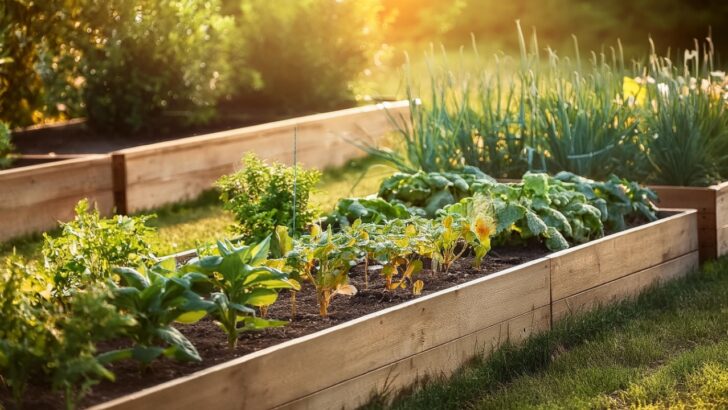If you love gardening but dread the backbreaking work of digging, there’s good news—there’s a better way. No-dig gardening lets you build healthy, productive soil while keeping effort (and weeds!) to a minimum.
It’s a method that mimics nature, enriches your soil, and makes gardening more enjoyable. Jamie Walton of Nettles and Petals shares how to make your own. Here’s how it works.
What Is No-Dig Gardening?
No-dig gardening is exactly what it sounds like: a way to grow plants without disturbing the soil. Instead of turning over dirt, you build layers of organic matter—like compost, straw, and mulch—right on top of the ground. This creates rich, loose soil over time, full of beneficial microbes and nutrients. It’s an easy, sustainable way to garden that works with nature, not against it.
Why No-Dig? The Big Benefits
This method isn’t just about avoiding hard labor — it brings a wealth of benefits for both you and your plants. By leaving the soil undisturbed, you create a thriving ecosystem where earthworms, fungi, and microbes work together to support plant growth naturally.
The thick layers of compost and mulch act as a barrier against weeds, drastically cutting down on the time you’d otherwise spend pulling them out. These same layers help retain moisture, meaning your garden stays damp longer and requires less watering. Without digging, the soil remains stable, reducing erosion and keeping nutrients where they belong. Best of all, this method means less physical labor for you—just layer organic materials, plant directly into them, and watch your garden flourish with minimal effort.
How to Start a No-Dig Garden
Starting your own no-dig garden is simple and rewarding. Here’s what to do:
- Pick Your Spot – Choose a sunny area where you’d like to grow. No need to clear the ground—grass and weeds will break down underneath.
- Lay Down a Weed Barrier – Use cardboard or thick newspaper to cover the ground. This blocks light, smothering weeds while allowing water and microbes through.
- Add Layers of Organic Matter – Spread compost, aged manure, straw, or mulch in thick layers. This builds rich soil over time.
- Plant Directly into the Layers – Make small holes in the compost and plant your seeds or seedlings. Over time, the layers will decompose into a nutrient-rich growing medium.
- Keep Mulching – Each season, add fresh layers of compost or mulch to nourish the soil and keep weeds at bay.
Challenges & Things to Consider
While no-dig gardening is easier in the long run, there are a few things to keep in mind. Patience is key, as the soil structure and fertility improve gradually, with results getting better each season. Gathering enough compost and mulch can require some effort upfront, but the investment pays off in healthier, more productive soil. Additionally, while no-dig gardening fosters strong, resilient plants, it doesn’t eliminate garden pests entirely—you’ll still need to monitor for insects and critters that might take an interest in your crops.
The Future of Gardening: Simpler & Smarter
No-dig gardening isn’t just a trend—it’s a smarter, more sustainable way to grow. Whether you’re a beginner or a seasoned gardener, this method helps you create thriving, low-maintenance gardens while improving the health of your soil. Give it a try, and you might never go back to digging again!


